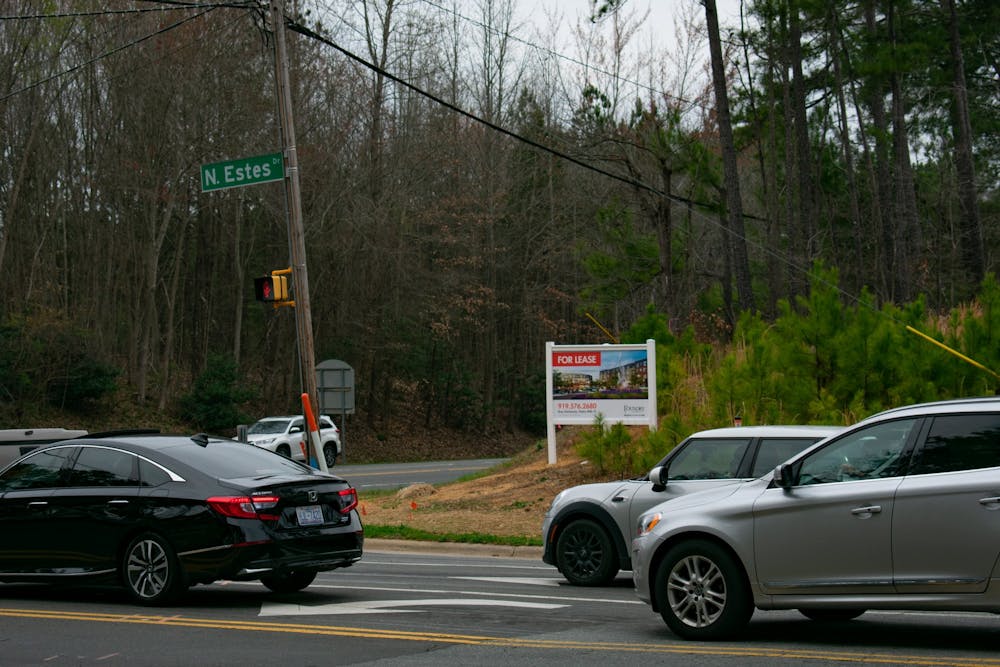Aura Chapel Hill, a mixed-use development planned for the northeast corner of Martin Luther King Jr. Boulevard and Estes Drive, has been facing scrutiny from local residents at advisory board meetings over the last several weeks.
The development plans to combine apartments and townhomes with retail spaces, restaurants, office spaces, work spaces and green spaces.
Chapel Hill's advisory boards are considering if they want to recommend the project before it is sent to the Town Council for a final decision. If approved, the development is scheduled to be completed and occupied by the end of 2023.
Residents have raised concerns over potential increased traffic and the amount of affordable housing it will bring to the Chapel Hill community. Signs sighted near the proposed development read “say no to Aura” and “luxury housing is not what we need.”
Who’s against Aura?
Members of 14 neighborhoods near the development site have formed a group called Estes Neighbors. Julie McClintock, a member of the Chapel Hill Alliance for a Livable Town, who is involved with Estes Neighbors, said the group was created in early January as a response to the continued progress of the Aura development.
The organization’s Facebook group, created in mid-February, has almost 80 members. A petition the group made asking the Town Council to block Aura Chapel Hill has received over 300 signatures.
McClintock said the signs seen near the development were put up by members of this group, though they had recently been taken down. She said they would continue trying to make others on Estes Drive aware of Aura and its potential effects.
“I just think a ton of people who use Estes Drive don’t know about this yet,” McClintock said.



